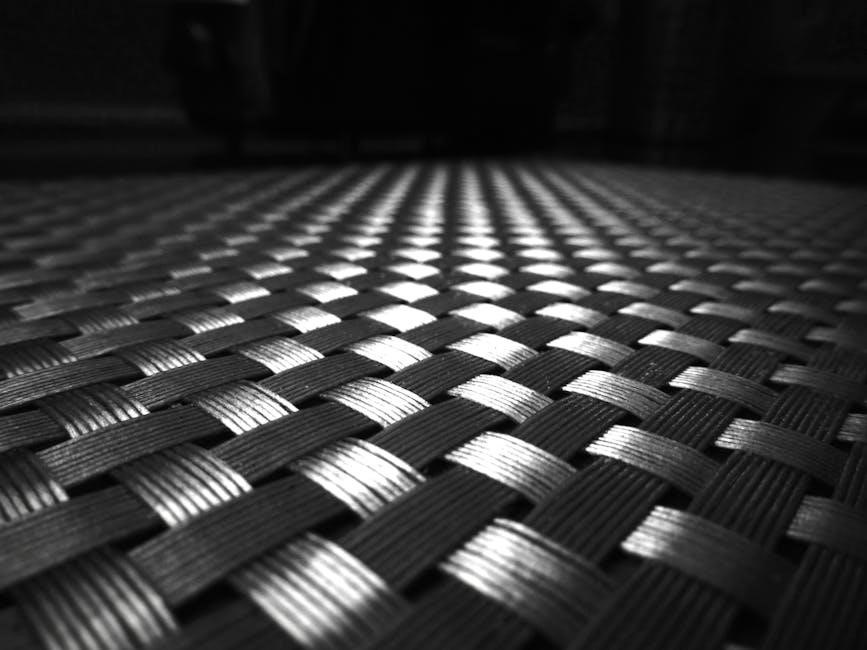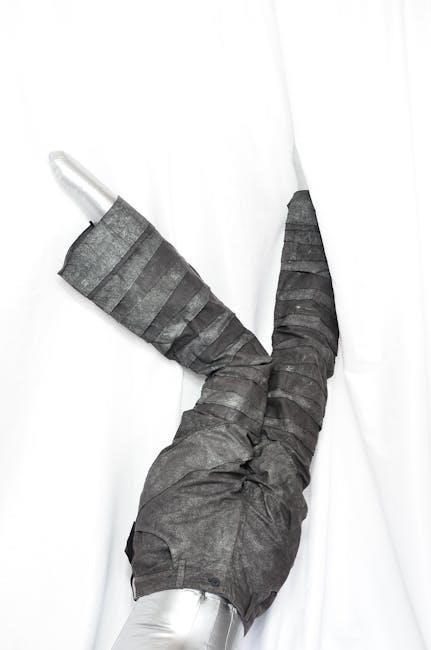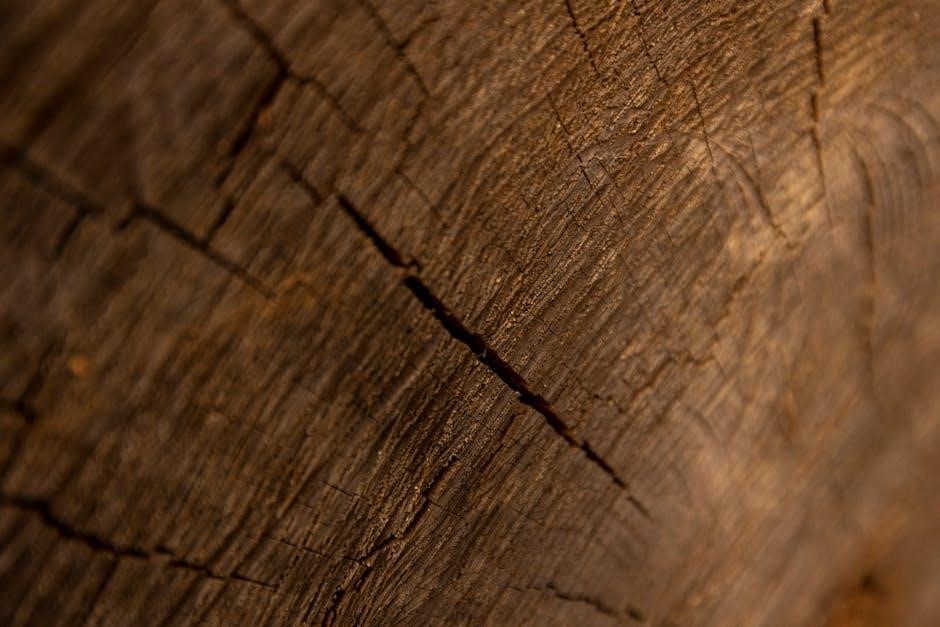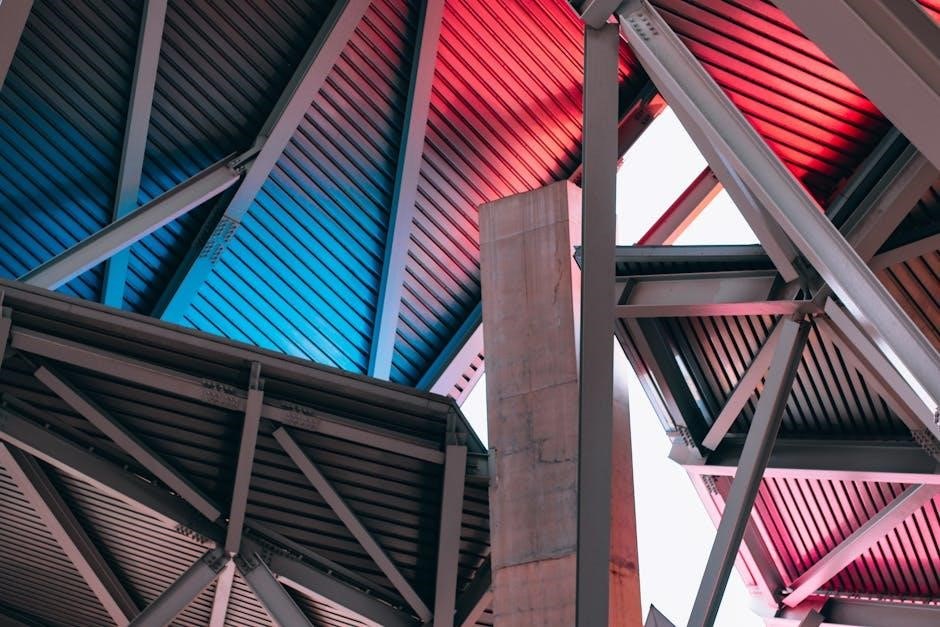Carbon fiber truss structures offer exceptional strength-to-weight ratios‚ enabling lightweight‚ high-performance designs. They are widely used in aerospace‚ construction‚ and automotive industries for their durability and efficiency.
1.1 What Are Carbon Fiber Truss Structures?
Carbon fiber truss structures are lightweight‚ high-strength frameworks combining carbon fiber composite materials with truss geometry. They consist of interconnected struts and nodes‚ optimized for load distribution. Widely used in aerospace‚ construction‚ and automotive industries‚ these structures offer exceptional durability and efficiency‚ making them ideal for applications requiring minimal weight and maximum performance.
1.2 Benefits of Using Carbon Fiber in Truss Design
Carbon fiber truss designs offer high strength‚ low weight‚ and excellent corrosion resistance. They provide exceptional durability‚ reducing material and maintenance costs. Ideal for aerospace and automotive applications‚ carbon fiber trusses enable weight reduction without compromising structural integrity‚ making them a superior choice for modern engineering challenges.
1.3 Historical Background and Evolution
Carbon fiber truss structures have evolved significantly since their introduction in aerospace during the mid-20th century. Advances in manufacturing and design have expanded their use into construction and automotive industries‚ offering lightweight and durable solutions. Modern engineering continues to optimize their performance and application across various fields‚ revolutionizing traditional materials.

Materials and Properties
Carbon fiber truss structures utilize high-strength‚ lightweight materials with exceptional stiffness and resistance to fatigue. Advanced resin systems enhance durability‚ making them ideal for high-performance applications.
2.1 Carbon Fiber Types and Their Properties
Carbon fibers vary in type‚ with high modulus and high tensile strength versions offering differing stiffness and load-bearing capabilities. PAN-based fibers are common‚ while pitch-based fibers provide exceptional thermal conductivity. Each type is chosen based on specific mechanical requirements‚ ensuring optimal performance in truss structures.
2.2 Resin Systems and Their Role in Truss Structures
Resin systems act as the binding matrix in carbon fiber truss structures‚ enhancing mechanical properties and durability. Epoxy resins are commonly used for their high strength and resistance to environmental factors. The resin’s curing process ensures structural integrity‚ bonding carbon fibers together to achieve optimal load-bearing capacity and flexibility in various applications.
2.3 Material Selection Criteria for Optimal Performance
Material selection for carbon fiber truss structures focuses on strength‚ weight‚ and durability. High-strength carbon fibers and compatible resins are chosen for their stiffness and resistance to environmental factors. Cost‚ manufacturability‚ and application-specific requirements also influence decisions to ensure optimal performance and longevity in various industrial and structural contexts.

Design Principles and Considerations
Designing carbon fiber truss structures involves precise load analysis and stress distribution. Geometric configurations and joint design are critical for maximizing strength and minimizing weight while ensuring structural integrity and durability.
3.1 Load Analysis and Stress Distribution
Load analysis is crucial for determining stress distribution in carbon fiber truss structures. By identifying external forces and their impact‚ engineers can optimize the design to ensure even load-bearing and minimize material failure. Advanced computational tools aid in simulating various load scenarios for enhanced structural reliability.
3.2 Geometric Configuration and Joint Design
The geometric configuration of carbon fiber trusses significantly impacts structural efficiency. Proper joint design ensures load transfer between members‚ minimizing stress concentrations. Optimizing node connections enhances overall stability and durability‚ crucial for high-performance applications in aerospace and construction. Precise engineering of these elements is vital for maximizing strength and longevity.
3.3 Finite Element Analysis (FEA) for Truss Structures
Finite Element Analysis (FEA) is crucial for simulating load distribution and stress points in carbon fiber trusses. It enables precise modeling of material behavior under various conditions‚ ensuring optimal design and safety. Advanced simulations help identify potential failures‚ allowing engineers to refine structures for enhanced performance and reliability in demanding applications.
Manufacturing Processes
Carbon fiber truss manufacturing involves advanced processes like hand layup and automated fiber placement‚ ensuring precision‚ durability‚ and optimal structural integrity in high-performance applications always.
4.1 Hand Layup vs. Automated Fiber Placement
Hand layup is a labor-intensive process suitable for complex geometries and small production batches‚ offering flexibility. Automated Fiber Placement (AFP) provides precision and efficiency‚ reducing human error and speeding production. While AFP offers superior consistency‚ it requires significant investment‚ making hand layup a viable option for specialized applications and budgets.
4.2 Curing Processes and Their Impact on Structural Integrity
Curing processes are critical for achieving optimal structural integrity in carbon fiber truss structures. Temperature‚ pressure‚ and duration must be precisely controlled to ensure proper resin curing and fiber-matrix bonding. This process enhances mechanical properties‚ including strength and stiffness‚ while minimizing defects and ensuring long-term durability.
4.3 Surface Finishing and Protection Techniques
Surface finishing and protection techniques are essential for carbon fiber truss structures to prevent environmental degradation and enhance durability. Methods include sanding‚ coating‚ and painting to protect against UV exposure and moisture. These treatments also improve aesthetics and ensure long-term structural integrity‚ maintaining the material’s high-performance properties.
Applications of Carbon Fiber Truss Structures
Carbon fiber truss structures are widely used in aerospace‚ construction‚ and automotive industries due to their high strength-to-weight ratio. They are ideal for creating lightweight‚ durable frameworks in modern architecture and renewable energy systems‚ offering versatility and efficiency in various applications.
Carbon fiber truss structures are integral in aerospace and aviation‚ providing lightweight yet robust frameworks for aircraft and spacecraft components. They enhance fuel efficiency and durability‚ making them essential for modern aviation innovations and space exploration. Their high strength-to-weight ratio ensures optimal performance in demanding environments‚ contributing to advancements in flight technology. Carbon fiber truss structures are increasingly used in architecture and construction for their lightweight‚ high-strength properties‚ enabling innovative designs with minimal material use. They are ideal for creating open spaces‚ such as in stadiums or bridges‚ while ensuring durability and resistance to environmental factors‚ making them a sustainable choice for modern building projects. Carbon fiber truss structures are widely used in automotive and industrial applications for their exceptional strength-to-weight ratio. They enable significant weight reduction‚ improving fuel efficiency and performance in vehicles. In industrial settings‚ these structures provide durability and resistance to environmental factors‚ making them ideal for machinery and infrastructure projects‚ enhancing overall efficiency and longevity. Carbon fiber truss structures face challenges like high production costs‚ material brittleness‚ and environmental impact. These factors can limit their widespread adoption despite their exceptional performance benefits. Carbon fiber truss structures‚ while incredibly strong‚ exhibit brittleness‚ making them prone to cracking under sudden impacts. This susceptibility can lead to structural failures‚ especially in dynamic environments. Enhancing impact resistance without compromising weight or strength remains a significant challenge in their design and application.
The high cost of carbon fiber materials and complex manufacturing processes‚ such as automated fiber placement and curing‚ significantly increase production expenses. These factors limit accessibility for industries with budget constraints‚ despite the material’s superior performance. Simplifying processes and reducing costs remain key challenges for widespread adoption of carbon fiber truss structures. Carbon fiber production is energy-intensive‚ contributing to high carbon emissions. Recycling remains difficult due to the composite’s complexity‚ with limited facilities capable of separating fibers from resin. Improper disposal leads to environmental harm‚ emphasizing the need for sustainable solutions and better waste management practices in the carbon fiber industry. Future trends include 3D printing innovations‚ integration of smart materials‚ and advanced recycling techniques‚ enhancing carbon fiber truss structures’ efficiency and sustainability. Research focuses on next-gen carbon fibers with enhanced strength and conductivity. New resin systems improve durability‚ while hybrid materials combine fibers for optimized performance. These advancements aim to reduce weight and increase longevity in truss applications. Smart materials and sensors are being integrated into carbon fiber trusses to enable real-time monitoring of structural health. Piezoelectric sensors detect stress and damage‚ improving safety and maintenance efficiency. This integration enhances performance and extends the lifespan of truss structures in demanding applications. 3D printing and additive manufacturing are revolutionizing truss design by enabling complex geometries and customized carbon fiber structures. These technologies allow for faster production‚ reduced material waste‚ and precise control over structural integrity. They also facilitate the integration of continuous carbon fiber into lightweight‚ high-performance trusses for aerospace and industrial applications. This section explores successful implementations of carbon fiber truss structures across industries‚ highlighting their performance benefits and practical applications in real-world scenarios and innovative projects. Carbon fiber truss structures have been successfully used in aerospace‚ automotive‚ and construction. In aerospace‚ they provide lightweight support for satellites and aircraft. In automotive‚ they enhance vehicle durability and reduce weight. In construction‚ they offer durable frameworks for modern architectural designs‚ showcasing their versatility and strength across diverse applications. Failed carbon fiber truss projects often stem from material limitations‚ design flaws‚ or manufacturing defects. Issues like improper curing‚ inadequate joint design‚ and environmental factors have led to structural weaknesses. These cases highlight the importance of rigorous testing and adherence to design guidelines to avoid costly failures and ensure reliability. Carbon fiber truss structures surpass traditional materials like steel and aluminum in weight reduction and strength. While offering durability and corrosion resistance‚ they face challenges in cost and manufacturing complexity. These factors significantly influence design choices across industries. Steel and aluminum remain cost-effective for certain applications‚ while carbon fiber excels in high-performance‚ lightweight requirements. Carbon fiber truss structures revolutionize industries with their high-performance‚ lightweight designs. Their exceptional strength and durability make them ideal for aerospace‚ construction‚ and automotive applications‚ driving innovation and efficiency. When designing carbon fiber truss structures‚ prioritize material selection‚ load analysis‚ and geometric configuration. Ensure optimal resin systems‚ precise joint design‚ and consider finite element analysis for stress distribution. Address challenges like brittleness and high costs while exploring future trends in materials and manufacturing technologies for enhanced performance and sustainability. The future of carbon fiber truss structures lies in advanced material innovations‚ smart integration‚ and additive manufacturing. Emerging technologies like 3D printing and hybrid materials promise enhanced efficiency‚ sustainability‚ and customizability‚ driving their adoption across industries for next-generation applications. Engineers and designers should prioritize material optimization‚ leverage FEA tools‚ and conduct thorough prototyping. Collaborating with manufacturers ensures feasibility‚ while staying updated on emerging technologies enhances innovation. Emphasizing sustainability and cost-efficiency will drive successful implementations of carbon fiber truss structures in diverse applications.5.1 Aerospace and Aviation Applications
5.2 Architectural and Construction Uses
5.3 Automotive and Industrial Implementations
Challenges and Limitations
6.1 Material Brittleness and Impact Resistance
6.2 High Production Costs and Manufacturing Complexity
6.3 Environmental Impact and Recycling Challenges

Future Trends and Innovations
7.1 Advanced Material Developments
7.2 Integration of Smart Materials and Sensors
7.3 3D Printing and Additive Manufacturing in Truss Design

Case Studies and Real-World Examples
8.1 Successful Implementations in Various Industries
8.2 Lessons Learned from Failed Projects
8.3 Benchmarking Against Traditional Materials
9.1 Recap of Key Design Considerations
9.2 The Future Outlook for Carbon Fiber Truss Structures
9.3 Final Recommendations for Engineers and Designers
